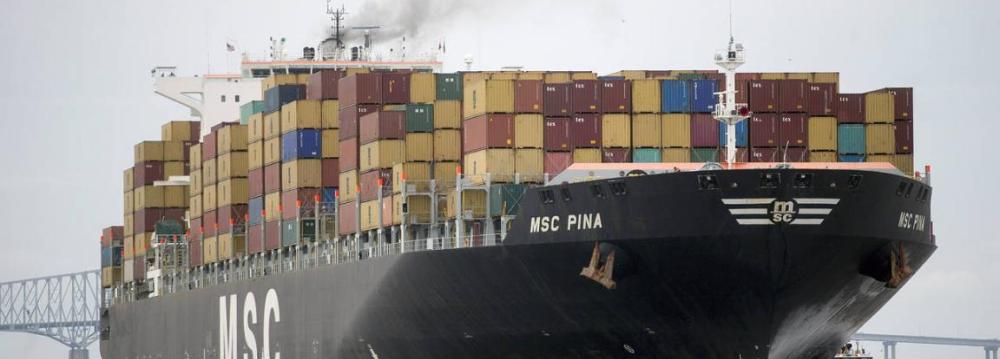Some of the world’s largest container shipping lines are planning to stop in Iran for the first time in years after the lifting of sanctions, marking a key step in the country’s return to international markets.
Last Thursday, Mediterranean Shipping Co. SA, the second-largest shipping line by volume, discharged 300 containers filled with food and agricultural commodities at the port in the southern Iranian city of Bandar Abbas.
It was the first time, one of the Swiss company’s vessels had called at an Iranian port since 2012, according to an MSC spokeswoman, wrote the Wall Street Journal.
CMA CGM SA, the third-largest line, also has begun its service to Iran, a spokesman said.
MSC’s stop, on a round trip between China and the Middle East, was an early indication of how July’s nuclear deal is giving Iran’s economy a boost.
Iran agreed last summer to limit its nuclear development activities. In exchange, the country is to get relief from sanctions that have crippled its economy.
“With sanctions gone, everyone expects there to be quite a surge for containerized goods,” said Lars Jensen, chief executive of Sea Intelligence Consulting in Copenhagen. “They see this as a national strategic area for them. There’s an overall sense of great optimism about container shipping in the region.”
Western sanctions cut Iran off from global payment systems and prevented major insurers from covering shipments, severely hampering trade. Many shipping lines found it too risky to include the country in routes.
Between 2011 and 2015, container traffic through Iran fell by nearly half, from roughly 5 million 20-foot equivalent units, or TEUs—a common shipping measure—to about 2.8 million, according to global shipping association Bimco.
Jensen said he expects growth in Iran’s container shipping industry to be slow at first.
“Since the sanctions took hold, large carriers have delivered goods destined for Iran to nearby ports in Oman and the UAE, where smaller vessels picked them up for the final leg of the journey. Carriers have little incentive to adjust their routes immediately,’ Jensen said.
MSC plans to include Bandar Abbas in its 16-stop New Falcon service, which runs from China, through Singapore and Sri Lanka to Iran, visits the UAE and India, and returns to China every 21 days.
“Iran is really only opening up, and as things progress, volumes should increase,” said Fiona Jackson, an MSC spokeswoman. “It’s baby steps.”
Other large carriers plan to visit Iran as well.
French shipping line CMA CGM resumed calling at Bandar Abbas on August 6, sending a 13,000-TEU ship to the Iranian port as part of its China India Middle East Express service, a spokesman said.
Executives with Danish conglomerate A.P. Moeller Maersk A/S, which includes Maersk Line, the world’s largest marine carrier, visited Iran in recent days to discuss potential projects, a spokeswoman said.
She added that any decisions regarding transportation would need to wait for the repeal of sanctions.
Maersk Line has not had a significant presence in Iran for at least a decade, a spokesman for the carrier said.
Iran’s state-owned Islamic Republic of Iran Shipping Lines, or IRISL, said in October that it was seeking to expand its fleet of container ships by 579,000 TEUs by 2020, and was discussing resuscitating a shipping alliance with India that has been dormant since 2013 because of sanctions.
State media also have reported that the country is pursuing deals with foreign investors to improve port infrastructure in the country.
As of now, Bandar Abbas is the only port in Iran that can handle large container ships of 8,000 TEUs or more.


